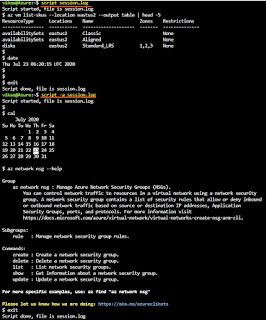This Week I Learned - Week #31 2020

This Week I Learned - * Windows Server container support in the Azure Kubernetes Service makes it possible to: - Lift and shift Windows applications to run on AKS - Seamlessly manage Windows and Linux applications through a single unified API - Mix Windows and Linux applications in the same Kubernetes cluster – with consistent monitoring experience and deployment pipelines * Helm Charts helps you define, install, and upgrade even the most complex Kubernetes application. The latest version of Helm is maintained by the CNCF – in collaboration with Microsoft, Google, Bitnami and the Helm contributor community. * Azure disk encryption (ADE) that leverages the BitLocker feature of Windows and the DM-Crypt feature of Linux to encrypt Managed Disks with customer managed keys within the guest virtual machine * Temporary disks are not managed disks and are not encrypted by SSE * Cloud Native Computing Foundation ( CNCF ) runs the Certified Kubernetes Conformance Program. There are over 90





